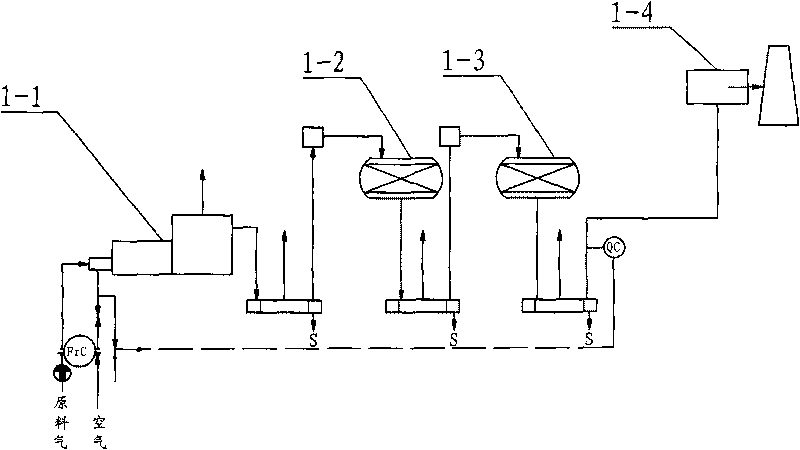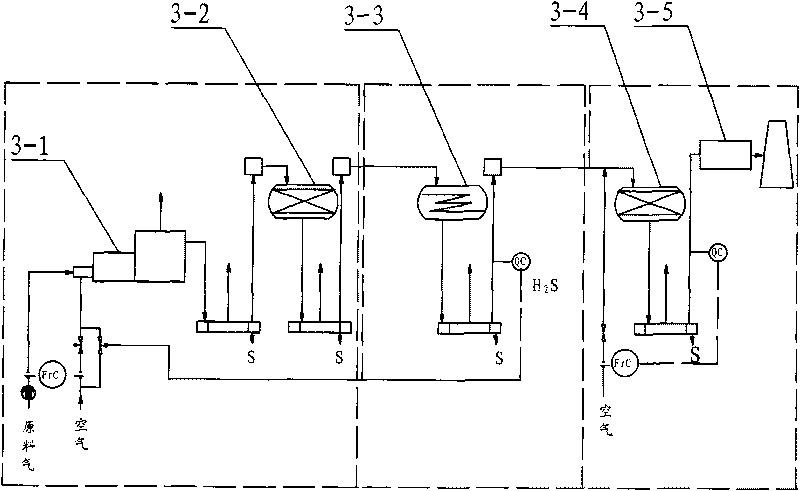Double selectivity efficient sulfur recovery device
A sulfur recovery and selective technology, applied in the preparation/purification of sulfur, can solve the problems of high operating cost, large floor space and large investment, and achieve the effect of reducing operating cost, saving land area and reducing investment.
- Summary
- Abstract
- Description
- Claims
- Application Information
AI Technical Summary
Problems solved by technology
Method used
Image
Examples
Embodiment
[0064] Such as Figure 4 As shown, a dual-selective high-efficiency sulfur recovery device includes sequentially connected in series combustion furnace and waste pot 4-1, primary Claus reactor 4-2, secondary Claus reactor and selective hydrogenation reactor 4-3. Three-stage selective oxidation reactor 4-4, deep desulfurization reactor 4-5, chimney 4-6;
[0065] Fill the peroxygen protection type and organosulfur hydrolysis type Claus catalyst in the primary Claus reactor 4-2;
[0066] In the two-stage Claus reactor 4-3, two different catalysts are loaded in two stages, and the Claus catalyst is loaded in the upper stage to continue the Claus reaction The lower section is loaded with a highly selective direct hydrogenation reduction catalyst, and the unreacted SO in the upper layer is 2 Direct hydrogenation reduction to elemental sulfur instead of H at a lower temperature of 200-220°C 2 S.
[0067] A low-temperature selective direct oxidation catalyst is loaded in the thre...
PUM
 Login to View More
Login to View More Abstract
Description
Claims
Application Information
 Login to View More
Login to View More - R&D
- Intellectual Property
- Life Sciences
- Materials
- Tech Scout
- Unparalleled Data Quality
- Higher Quality Content
- 60% Fewer Hallucinations
Browse by: Latest US Patents, China's latest patents, Technical Efficacy Thesaurus, Application Domain, Technology Topic, Popular Technical Reports.
© 2025 PatSnap. All rights reserved.Legal|Privacy policy|Modern Slavery Act Transparency Statement|Sitemap|About US| Contact US: help@patsnap.com



